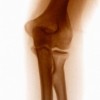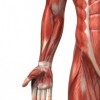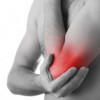Elbow & Forearm
Rheumatoid Arthritis in the Elbow
Rheumatoid arthritis (RA) is a relatively common condition affecting three times more women than men and normally developing between the ages of 40 to 50, although it can affect people at any age. RA has the ability to develop in any joint of the body but most commonly it affects the wrists, hands, ankles and feet. It normally develops symmetrically affecting the same joint on both sides of the body.
Symptoms begin as joint and muscle stiffness, particularly in the early mornings with symptoms starting to ease 2-3 hours after getting up. After a few weeks the same joints that have been stiff may become painful and swollen. The pain will feel like a deep throbbing ache that is aggravated by rest and certain levels of activity. The swelling levels during a flare up also cause the skin around the joint to be extremely tender and slightly warm to the touch.
Forearm - Myofascial Pain Syndrome (muscle pain)
Myofascial pain (muscle pain) can result from sprains or strains of a joint, excessive repetitive movements and high stress levels. Risk factors like poor posture, fatigue, heavy lifting and even muscle weakness may make you more susceptible to myofascial pain. Specific causes like stress, normally cause quite a lot of tension in the upper back and neck which can then lead to quite bad headaches.
Symptoms range from a sudden sharp pain, spasms and burning pain to a gradual build-up of a dull ache and discomfort that is worse in the evening after long days at work or activity. Muscle knots and trigger points can cause pain to refer from the injured muscle to the surrounding areas.
Olecranon bursitis most commonly occurs as the result of a repetitive strenuous activity that encourages the triceps muscle and tendon to tighten and shorten from overuse. Bursitis can be caused through injury, infection or it can be triggered by certain health conditions like rheumatoid arthritis and gout.
Symptoms normally include a constant dull ache or burning pain at the back of the elbow that is aggravated by any touch, pressure or movement of the joint. There will normally be notable swelling around the back of the elbow and movement of the elbow joint will be stiff especially in the morning and after any activity involving the elbow. In cases of bursitis caused by infection, the skin around the affected joint will appear to be red and will feel incredibly warm to the touch with additional symptoms of a high temperature and feverish chills.



